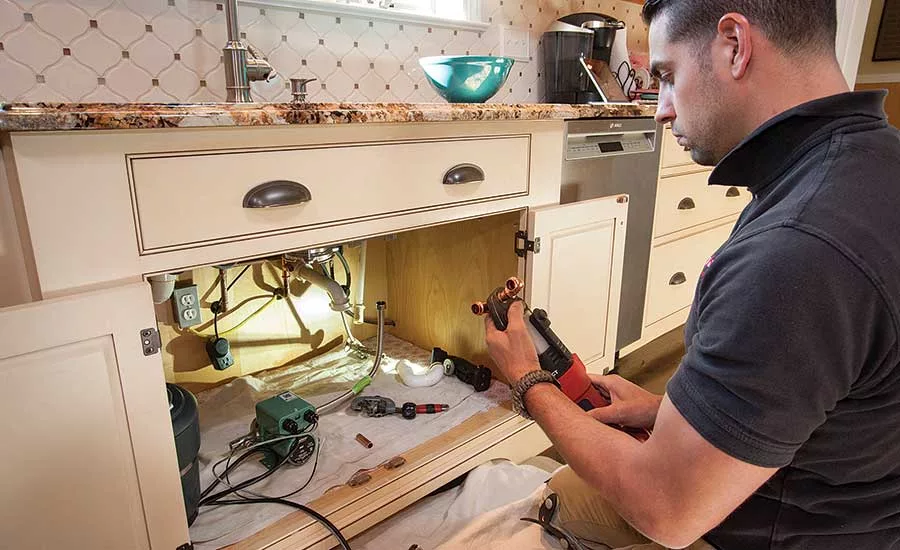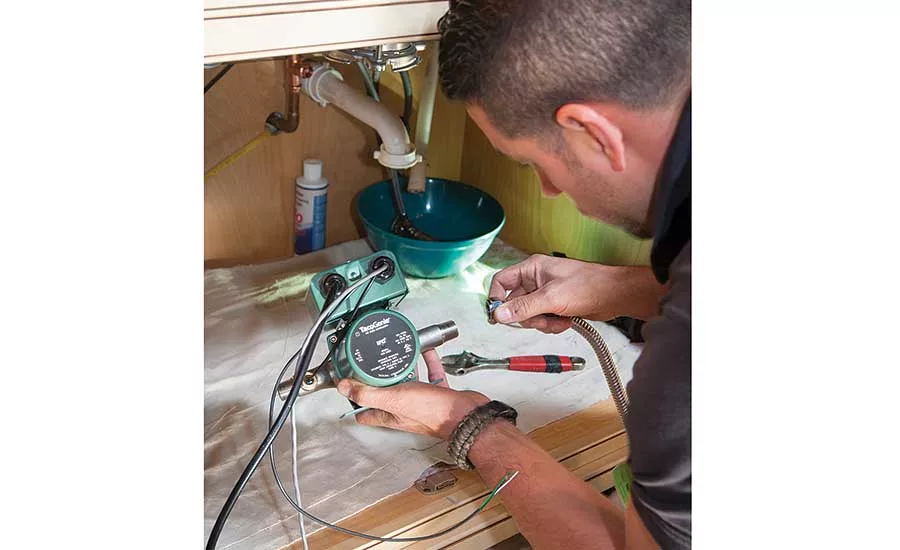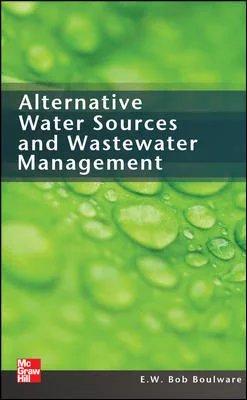Domestic hot water recirc — no longer an obscure technology
Coast-to-coast, and now code-encouraged.

Anthony Tosco, owner of Audubon, Pennsylvania-based Avanti Plumbing, Heating & Cooling, installs a TacoGenie hot water recirculation device.


Anthony Tosco encourages his customers to consider the value of installing resirc systems.
The longest drought in Texas lasted more than five years, from 2010 to mid-2015. That’s a long, long time to be with little or no water. The drought that affected Texas also left much of the Southeast and Southwest without water — including New Mexico, Arizona and parts of Nevada and California — causing more than $1 billion in overall damage during that five-year period.
The main culprit of the intense dryness was the La Niña weather pattern. High temperatures related to climate change exacerbated the drought. Though a few years of normal rainfall have helped, climatologists are concerned that another drought may again be on the way.
The silver lining to those five torturous years of southern drought was the emergence of a once-obscure technology — domestic hot water recirculation. Hot water “recircs” (or, simply, DHWR) are now mandated in some states, with more on the way and are referenced in the Uniform Plumbing Code. During and after the drought, concerns about the availability of fresh water took on a new sense of urgency, and new awareness nationwide.
TEXAS HWR CHAMPION
A few years ago, Kim Ireland, a homeowner in Austin, Texas, wrote to legislators and water utility managers about the dire conditions of fresh water reserves in Texas.
“I became very concerned when I learned how depleted our aquifers become during droughts [conditions that happen cyclically there],” Ireland says. “We could see parched reservoirs that contained a fraction of the water they once held. To think my children could grow up in such an environment — right here in the USA — and without attempting to improve conditions before they get worse, isn’t possible.
“When I learned first-hand about the effectiveness of hot water recirculation, I began telling others about it,” she continues. “I spoke about the technology at various meetings and wrote lots of letters. Think of it: When simple, inexpensive technology can save 12,000 gallons of water a year for an average household of four, there’s good reason to champion the cause.”
With three young girls to raise, the Irelands knew they’d need plenty of water. The home they purchased didn’t have a recirc system, but she’d learned enough to know it was something they’d need.
“After all, as we waited several minutes for hot water at sinks and showers, perfectly clean water was wasted. We pay for every ounce of it, and then to dispose of it as well,” she says.
Kim’s search for a solution took her to Bob Lemons, owner of Austin-based Mr. Tankless. According to Lemons, close to 100% of his business these days is in the provision of domestic hot water, or servicing those systems. “It’s all we do, and all jobs run with recirc,” he adds. Lemon’s territory includes all of Central Texas.
Lemons recommended and later installed TacoGenie for the Ireland home, as it can be retrofitted to existing plumbing, eliminating the need for a new hot water return pipe.
“TacoGenie delivers hot water comfort and convenience to faucets and taps at your command and is available 24 hours a day,” Lemons says. “It also saves water, lots of it, and money. What’s not to like about that? When hot water arrives at the faucet, the recirc system’s heat sensor and control board shuts off the circulator to prevent pumping excess hot water into the cold water line.”
IN PENNSYLVANIA, TOO
Anthony Tosco, who owns Audubon, Pennsylvania-based Avanti Plumbing, Heating and Cooling, says: “Our most precious resource on earth is water. And though COVID-19 has stolen the headlines lately, it doesn’t take much research to learn that when it comes to the availability of clean water, we’ve put ourselves in a pretty serious bind — with or without concerns over a new virus. Either we act now to preserve our fresh water, or we’ll lose it.
“As a plumber, I’m glad to do what I can,” he continues. “So I encourage customers — and many more of them lately — to consider the value of installing a recirc system. They’ve now become one of our mainstream offerings.
“I’m still occasionally surprised to learn that home and business owners don’t know what recirc systems are,” Tosco adds. “In my experience, most who learn from me about these simple devices are eager to have them installed. And, I’ll add — it’s profitable work.”
Tosco’s a conscientious guy who teaches his kids about water conservation. Of course, for those home and business owners that draw water from a municipal source, the cost of water is another consideration, and it can quickly add-up.
OUTLAWS TO THE RESCUE
Mechanical outlaw, Keefer Rader — who owns Outlaw Mechanical in Albuquerque, New Mexico — runs a thriving business in the Land of Enchantment. Though they focus on providing residential and light commercial HVAC and hydronic solutions, they do their share of plumbing as well. On that side of the business, one of the most common requests is for installation of domestic hot water recirculation.
“Recirc systems are code in our state for new construction, but people also realize that — because we’re in the desert — any form of water conservation is a good thing,” Rader says.
Outlaw Mechanical installs about 100 recirc systems each year and the number of installs seems to increase each year, Rader notes.
“Home and business owners don’t want to wait for the arrival of hot water because they know it’s not only scarce, but it’s also expensive to buy and to send down the drain,” he adds.
When doing remodels, he employs a simple technique to help tip decision-makers who may need just a bit more convincing.
“I turn on the hot water at the furthest fixture from the source of hot water,” he says. “I tell them it’s all about time, pressure and flow. After just a 45 seconds or so, I tell them, ‘there goes five gallons; gone.’ Typically, 10 to 15 gallons goes down the drain each time they wait for hot water at that tap.
“We’ve standardized on Taco’s ECM 006e3 stainless steel circ partnered with a SmartPlug,” he adds. “I especially appreciate, with customers who don’t want to adjust timers, that I never have to reset their timer. It’s entirely self-adjusting.”
Rader also found that, when people have lived with the convenience and savings that hot water recirc systems provide, most never want to live without it.
PICKING THE RIGHT PUMP
For new construction, or in a home with dedicated recirc lines, options abound. Most circulator manufacturers — in addition to a few water quality companies — offer drop-in circulators, many of which come with a timer, allowing the homeowner to set the time of day the circulator runs.
For retrofit work, availing recirculation for homes without dedicated return line, easy-in packages typically use the cold return line to complete the recirc loop. This is usually accomplished with a small diverter valve that installs under the water fixture located farthest from the hot water source.
“Like everything else (my phone, my truck, my kids), recirc systems are getting smart,” Tosco adds. “Gone are the days of a standard circulator that runs 24/7/365. Even analog timers, once the early choice for recirc systems, are rudimentary today. Systems are now available with “adaptive” technology — they pattern hot water use in the home, then pump hot water at the times it was used during the recording period.”
Water savings are hard to calculate because of so many influencing factors. U.S. government studies estimate water savings of up to 12,000 gallons for a family of four with four points of hot water use, and up to 15,000 gallons for five points of use per year. That number increases with a larger number of children and pets.
Return on investment depends on the cost of the monthly water utility bill, electricity cost per kW, the number of users and installation cost — though typically it falls between two and three years.
Consider adding domestic hot water recirculation to your service offering. It’s an additional source of revenue. I’ve found that most customers like knowing about it as an option, especially for use in larger homes where wait times at the tap are typically longer.
You’ll always find a few folks that just don’t care, but others will wonder how they’ve survived without it.
Looking for a reprint of this article?
From high-res PDFs to custom plaques, order your copy today!






